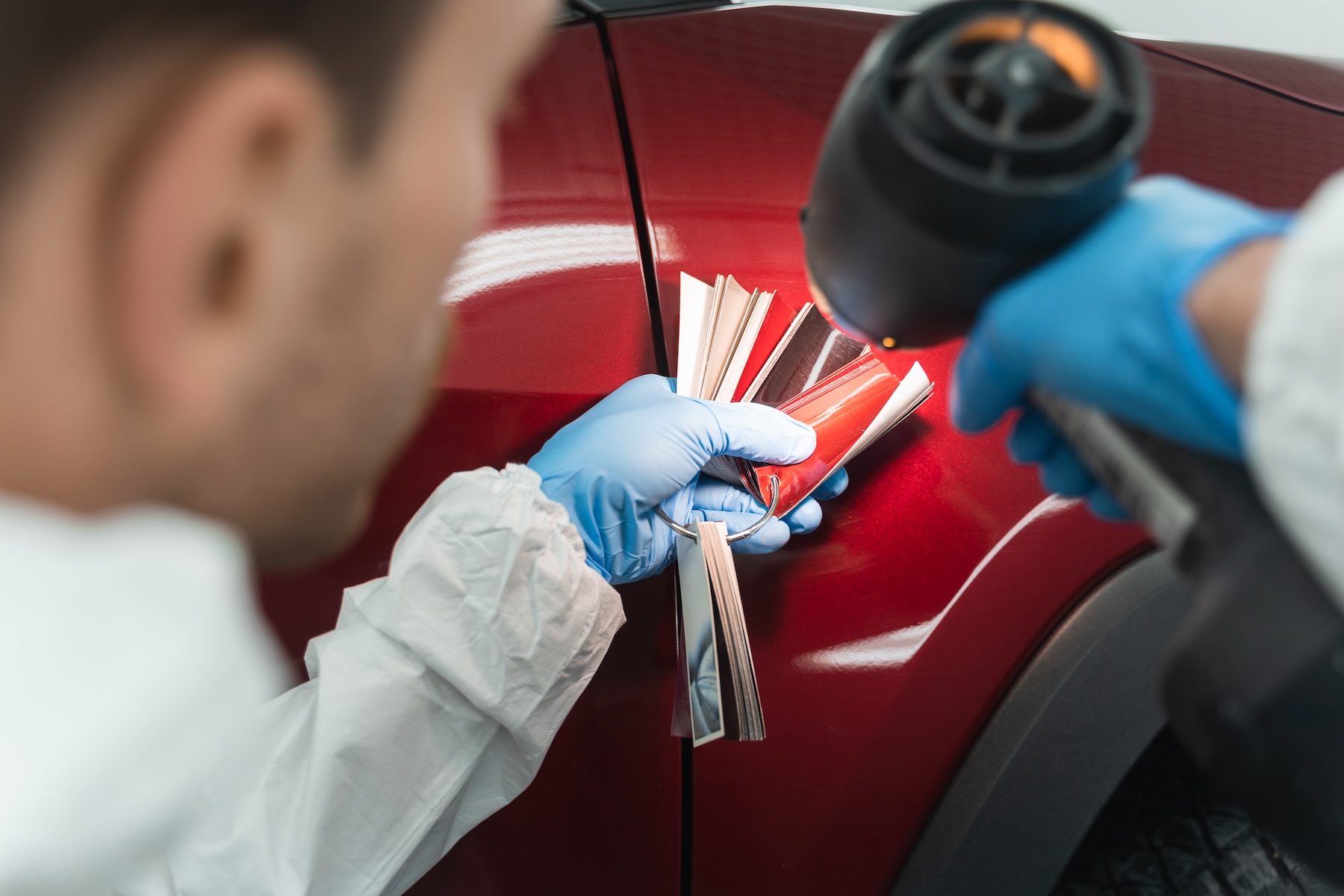When it comes to protecting your car, ceramic coatings have become the gold standard. This revolutionary technology offers unparalleled defense against the elements, keeping your vehicle looking new for years. But what exactly is ceramic coating, and how does it work? Let’s dive into the science behind this innovative solution and explore how it can benefit your car.
Understanding Ceramic Coating
Ceramic coating, often referred to as nano-ceramic coating, is a liquid polymer that is applied to the exterior surfaces of a vehicle. This coating chemically bonds with the factory paint, creating a layer of protection. The term “nano” comes from the microscopic particles within the coating, which fill in tiny imperfections and form a smooth, protective surface.
The Chemistry Behind Ceramic Coatings
Ceramic coatings are primarily composed of silicon dioxide (SiO2), which is derived from quartz or sand. When applied, these molecules form a crystalline structure that is incredibly hard and durable. Some high-end coatings also include titanium dioxide (TiO2), which adds additional protection and enhances the coating’s hydrophobic properties.
How Ceramic Coatings Protect Your Car
- UV Protection: One of the primary benefits of ceramic coatings is their ability to protect your car’s paint from harmful UV rays. Prolonged exposure to the sun can cause paint to fade and oxidize. The ceramic coating acts as a barrier, reflecting UV rays and preventing damage.
- Chemical Resistance: Your car is exposed to a variety of contaminants, including acid rain, bird droppings, tree sap, and road salt. These substances can eat away at the paint and cause corrosion. Ceramic coatings provide a chemical-resistant surface that prevents contaminants from adhering and causing damage.
- Scratch Resistance: While ceramic coatings are not completely scratch-proof, they are significantly harder than the factory paint. This added layer of hardness helps to reduce minor scratches and swirl marks from everyday wear and tear.
- Hydrophobic Properties: One of the most appealing aspects of ceramic coatings is their hydrophobic nature. Water, along with dirt and grime, beads up and rolls off the surface, making your car easier to clean. This property also helps to keep your car looking cleaner for longer periods.
- Enhanced Gloss and Shine: Ceramic coatings provide a high-gloss finish that enhances the appearance of your car. The smooth, reflective surface brings out the depth and clarity of the paint, giving your vehicle a showroom shine.
The Application Process
Applying a ceramic coating is a meticulous process that requires a clean, controlled environment. Here’s a step-by-step overview of what you can expect during a professional ceramic coating application:
- Preparation: The vehicle undergoes a thorough wash and decontamination process to remove any dirt, grime, and previous waxes or sealants. This step is crucial to ensure the coating bonds properly to the paint.
- Paint Correction: Any imperfections in the paint, such as scratches or swirl marks, are corrected using a machine polisher. This step ensures a smooth surface for the coating to adhere to.
- Application: The ceramic coating is carefully applied in small sections using a microfiber applicator. The coating is then left to cure for a specific period, allowing the molecules to bond with the paint.
- Buffing and Curing: After the initial curing period, the excess coating is buffed off to reveal a smooth, glossy finish. The vehicle is then left to fully cure for several hours or even days, depending on the product used.
Long-Term Benefits of Ceramic Coating
Investing in a ceramic coating provides long-term benefits that go beyond mere aesthetics. Here are some of the key advantages:
- Longevity: Unlike traditional waxes and sealants that need to be reapplied every few months, ceramic coatings can last for years with proper maintenance. This durability translates to cost savings over time.
- Ease of Maintenance: The hydrophobic properties of ceramic coatings make it easier to clean your car. Dirt and grime are less likely to stick, and contaminants can be easily washed away with a gentle rinse.
- Resale Value: A well-maintained vehicle with a ceramic coating can retain its value better than one without. The pristine appearance and protected paint can make your car more attractive to potential buyers.
- Environmental Benefits: By reducing the frequency of washes and the need for harsh cleaning chemicals, ceramic coatings contribute to a more environmentally friendly car care routine.
Conclusion
Ceramic coatings represent a significant advancement in automotive care technology. By understanding the science behind these coatings, car owners can appreciate the value they provide in protecting and enhancing the appearance of their vehicles. Whether you drive a luxury car or a daily commuter, investing in a ceramic coating is a wise decision that offers long-lasting benefits.
For those looking to give their car the ultimate protection, August Precision offers top-tier ceramic coating services. Our expert team ensures a flawless application, so you can enjoy all the benefits of this cutting-edge technology.









